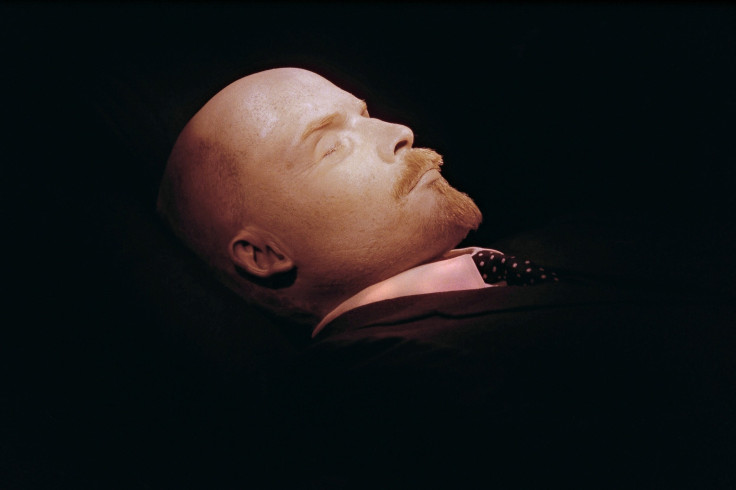Extreme Embalming: Russia Spends $200K To Preserve Vladimir Lenin’s 146-Year-Old Body

In 1924, Bolshevik revolutionary and leader Vladimir Lenin died at the age of 53. His body was embalmed and placed in a sarcophagus in what would become Lenin’s Mausoleum. Countless scientists have worked to maintain his preserved body, which has been on public display in the mausoleum for over 90 years. That would make the body 146 years old this year.
Every other year, Lenin’s preserving team bathes the body in mixtures consisting of glycerol solution baths, formaldehyde, potassium acetate, and other liquids to keep Lenin looking the way he did when he died. It’s certainly an extreme embalming method.
Now, the Russian federal government is planning on spending some $200,000 to further improve the preservation process this year, according to BBC. In an announcement on Russia’s State Procurement Agency website, the government notes that the large sum of money will go toward work of a “biomedical nature,” which will maintain the former Soviet leader’s body in a “lifelike condition.” Interestingly, the government funded Lenin’s preservation well up until the Soviet Union fell in the 1990s — after which the practice relied on private donations. More recently, however — perhaps due to Putin’s stance on refusing to bury Lenin’s body — the government has once again decided to fund the preservation.
Over the course of nearly a century, teams of scientists, anatomists, and surgeons have worked on Lenin’s body year-round. The work is quite complicated, and mainly entails substituting pieces of skin with other preservation materials, like plastics and embalming fluids. This method is quite different and far more encompassing than the usual embalming methods used for funerals.
“They have to substitute occasional parts of skin and flesh with plastics and other materials, so in terms of the original biological matter the body is less and less of what it used to be,” Alexei Yurchak, professor of social anthropology at the University of California, Berkeley, told Scientific American. “That makes it dramatically different from everything in the past, such as mummification, where the focus was on preserving the original matter while the form of the body changes.”
Dealing with skin changes, discoloration, dark spots, or wrinkles has become an arduous and painstaking process — both a science and an art — for Lenin’s embalmers. One might even say that the Center for Scientific Research and Teaching Methods in Biochemical Technologies, as well as what is known as the Lenin Lab, have pushed embalming methods to a unique level by keeping the body looking just like Lenin, without his original skin or tissue — all because Russia refuses to bury a leader long past.



























